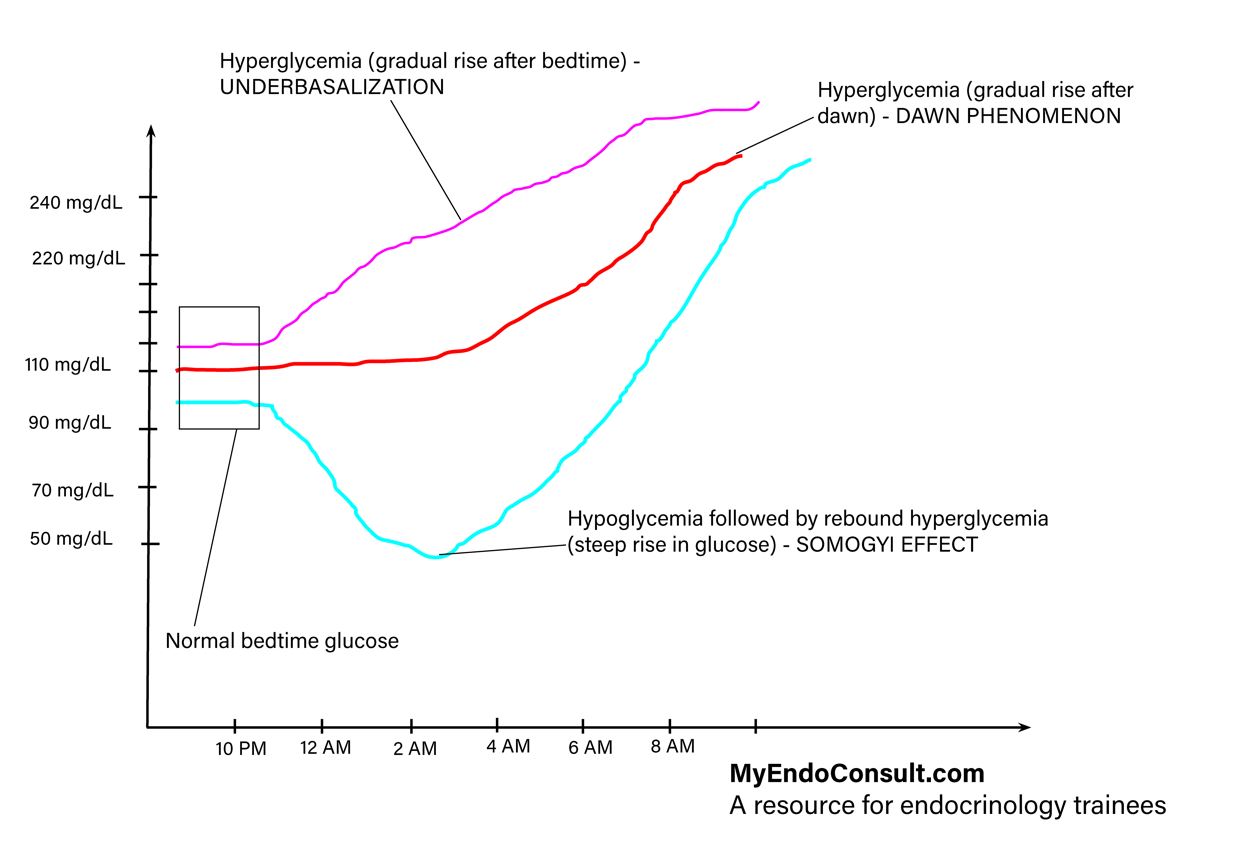A simple mnemonic for remembering the dawn and Somogyi phenomenon.
A simple memory aid for dawn and somogyi phenomenon
- SOMOgyi = SO MUCH insulin
- Dawn = Down (low) insulin at dawn
Somogyi effect
The Somogyi effect has classically been described as rebound early morning hyperglycemia in the setting of significant overnight hypoglycemia. Michael Somogyi first reported this colorful eponym in diabetology in 19591. The long-held belief has been that a period of hypoglycemia during an overnight fast triggers a counterregulatory hormonal response, which results in fasting hyperglycemia in the morning2. In a prospective study involving 262 subjects, the investigators used continuous glucose monitoring to assess trends in glycemic control amongst patients on a basal-bolus regimen. In subjects who developed nocturnal hypoglycemia, fasting hyperglycemia in the morning did not occur, discounting the Somogyi effect as a cause of fasting hyperglycemia1.
Dawn phenomenon
The dawn phenomenon occurs because counterregulatory hormones (cortisol, growth hormone, and catecholamines) increase hepatic glucose output (glycogenolysis) around 3-4 AM. This happens in normal physiology and is only evident in patients with overt or relative insulin deficiency (diabetes mellitus). In essence, insulin levels are relatively low compared to these counterregulatory hormones.
Underbasalization
This phenomenon occurs as a result of suboptimal levels of basal insulin administered at bedtime. Insulin is required to control hepatic glucose output during the fasting period. Hepatic glucose output increases when basal insulin levels are low, leading to fasting hyperglycemia.
| Glycemic trend | Bedtime Glucose | 3AM Glucose | Morning Glucose |
| Somogyi effect | Normal | Low (hypoglycemia) | High (hyperglycemia) |
| Dawn phenomenon | Normal | Normal | High |
| Underbasalization | Normal | High | Very high |

How to differentiate between dawn and Somogyi effects
For patients with persistent fasting hyperglycemia, instruct the patient to wake up around 2-3am for a capillary glucose check. If capillary glucose is low, this is suggestive of the classic Somogyi effect. Conversely, if glucose is normal, this implies the dawn phenomenon.
References
- Høi-Hansen T, Pedersen-Bjergaard U, Thorsteinsson B. The Somogyi phenomenon revisited using continuous glucose monitoring in daily life. Diabetologia. 2005;48(11):2437-2438. doi:10.1007/s00125-005-1946-5
- Rybicka M, Krysiak R, Okopień B. The dawn phenomenon and the Somogyi effect – two phenomena of morning hyperglycaemia. Endokrynol Pol. 2011;62(3):276-284.
Images(s) Courtesy
MyEndoConsult
Kindly Let Us Know If This Was helpful? Thank You!


